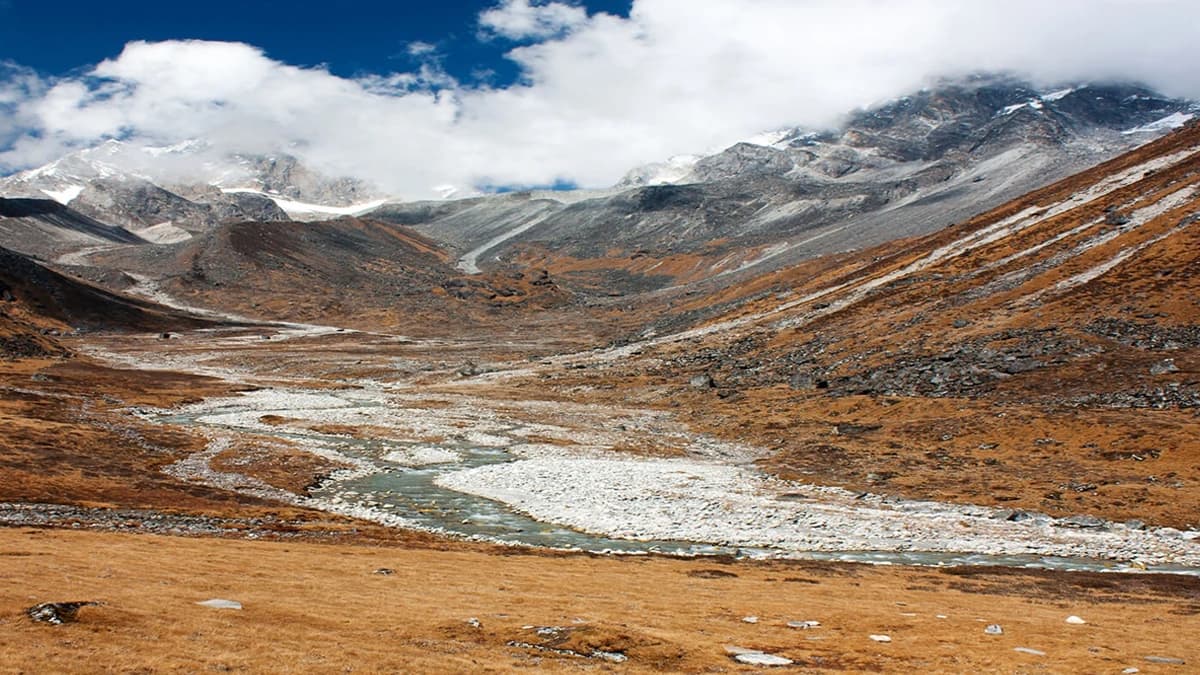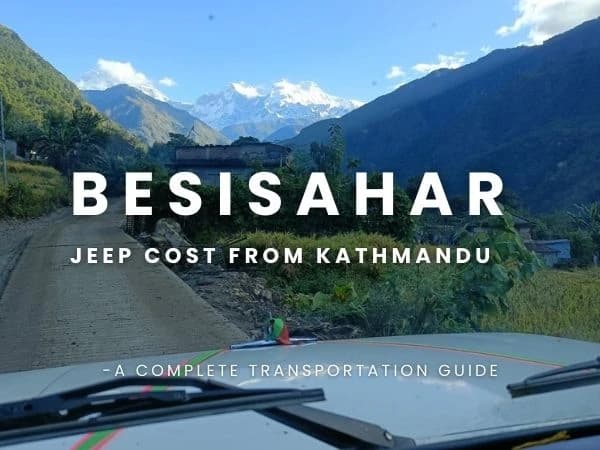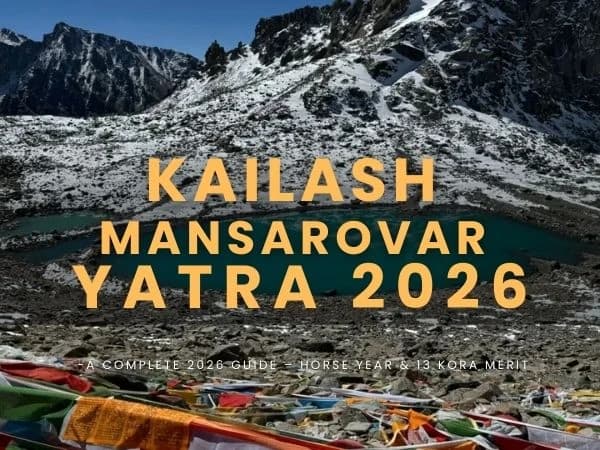Langtang valley lies about 62 Kms North of Kathmandu. It is a short Trek that takes you through a beautiful valley, across a river, and into the lap of giant mountains. This Trek is moderately difficult, and one can complete it in a week or more.
There is no doubt that the Langtang Valley Trek is one of the most beautiful Treks in Nepal. And Langtang is a beautiful place to visit. The 360-degree panoramic view of the snow-capped mountains is incredible.
But what about Langtang Trek Difficulty? I meet lots of people wondering about this particular topic. People want to visit different places, and all human beings like traveling. But there is always something which acts as a barrier to travel.
Some are not physically capable, some do not have enough budget, and some are not mentally prepared. However, the Langtang Trek Difficulty has an average value in the difficulty meter (maybe below average).
Still, You must be prepared for lots of things before you go Trekking to the mountains. There are various risks and complications that could occur during your visit.
Let us go through different factors that might increase the Langtang Trek difficulty. Also, there are tips to overcome such complications.
FAQ:
1) How Difficult is the Langtang Valley Trek?
Langtang valley Trek is not that difficult. As I have mentioned earlier, this Trek is moderately difficult. There are enough places for proper accommodation and food. There are no confusing trails or tough terrains.
But this Trek is not easy as well. Even though you do not gain as much altitude as the Everest region, the highest point in this Trekking route hits the 5000m mark.
2) Is Langtang Valley Trek technical?
The answer is no. This Trekking is not technical at all. One does not need any mountaineering skills or rock climbing techniques to complete this Trek. And you do not need any mountaineering gears as well.
What this Trekking does need is a will to travel, and a passion for exploring remote places.
3) Does this Trek need Trekking Experiences?
Again the answer is no. You do not need any Trekking experiences to complete the Langtang valley Trek. This Trek is ideal for both beginners and professionals. In fact, you can start with this Trekking and gain experience for other harder Treks.
Factors Affecting Langtang Trek Difficulty:
Even though the Langtang Trek difficulty is not that great, there are still some complications and factors you should take a look at. These factors are most common when you Trek to the Himalayas.
Altitude Sickness:
Altitude sickness can happen to anyone at any time when Trekking to the mountains. It is certain that you are going to gain some altitude once you start Trekking in Nepal. But, Langtang valley Trek does not take you to extreme altitudes as the Everest region does.
Still, there are hundreds of cases of altitude sickness in Langtang. So, make sure your body is properly acclimatized to the altitude.
And if you do get altitude sickness, make sure to descend as quickly as possible. Once you reach a friendly attitude, take some rest until you catch your breath. Then start climbing, but this time take rest very often and you will be fine.
Diamax is a medicine for altitude sickness that you can find in most Pharmacies. But i suggest you consult your doctor beforehand. It's better to know your body before taking any medicines with you.
Remote places:
Langtang valley is one of the most remote places near Kathmandu. You will not see proper roads and modes of transportation. The only option to take stuff in this region is either by carrying or flying.
There are small tracks surrounded by hills and mountains. Remoteness of any place leads to unavailability and improper accessibility. You must avoid getting sick or injured while you Trek to Langtang. If anything happens to you, it will take days before you reach a proper medical facility.
The quickest way would be flying to the nearest hospital or medical. And it will increase a significant amount of money.
Unavailability:
As we have discussed earlier, Langtang valley is a remote place with very little facilities. There are no modes of transport besides flying or carrying your goods. This sole reason makes stuff expensive.
Foods tend to get expensive as you hit higher altitudes, and same goes for water. It can cost a significant amount to buy a Litre of water. Locals have to work hard to get all the stuff required for daily survival.
A hot shower will cost you money, and charging your devices will cost you money as well. These little things add to the difficulty of this Trek.
I suggest you pack baby wipes to maintain hygiene. And make sure to pack a portable power bank to charge your devices.
Other than that, you will have limited options for food, and you will survive like the locals. I know it is not a big issue, but it can affect your mental strength if you do not prepare beforehand.
Physical and Mental Stress
As a whole, you would cover 60 to 80 Kms on foot during your Trek. It includes an average of 6 to 7 hours of hiking per day. It can be very tiring, as there are many ups and downs throughout the trail.
Sometimes the trail itself becomes difficult to walk. There are some landslide areas during your Trek, and you have to be very careful crossing such surfaces. There are a few steep climbs that take a few hours to climb. The walking and trail can physically challenge you.
But I think mental stress is more during a Trekking. There is always a fear while you Trek in such remote places. Fear of getting sick, fear of not making it to the top, and fear of getting lost in the wilderness.
Also some of you are going to miss the luxury back home. You are going to miss the warm bed, the hot shower, and all the luxurious food you can eat. Such conditions keep adding mental stress.
Self-motivation is the key to get past these complications. Yes, Trekking becomes hard, but that is the very definition of Trekking. Trekking is supposed to be hard and emotional. Look at the mountains, embrace the beauty of Langtang, and just go with the flow.
Weather and Temperature
The best time for Langtang Valley Trek is the months of September to December and March to May. These months offer clear views of the mountains and lush forests.
However, this Trek is doable throughout the year with some compromises and consequences in mind. Weather can change drastically around Langtang region. There are chances of heavy landslides if this region gets rainfall.
And the temperature can easily drop below 0 degree Centigrade. There are chances of heavy snowfall as well, which eventually can block the trail.
And if you are not prepared for such situations, you might face difficulties. Make sure you pack warm clothes and jackets. Sleeping bags are not a must, but they are recommended.
Packing
Last but not least, Packing well is important. Many people ignore this point and regret it later. Always try to pack light. You have to pack everything you need, but do not overdo anything. Pack all the necessary items, but nothing more than that.
Make sure you pack comfortable clothing and shoes. Your shoes must be comfortable and breathable. Your Trekking can get a lot harder if you do not have proper clothing.
Langtang Valley Trek without Guide:
Taking a Trekking guide with you is not mandatory. But, this Trek gets easier with a guide and a porter. Let me explain it to you.
First of all, an experienced guide has tons of knowledge which is a massive asset. A guide knows about the weather and conditions.
A guide will be your best friend throughout your Trek. You will get tons of motivation from your guide which helps you get through some tough situations. Besides, taking an experienced person to a remote place like this would be a better choice.
Taking a porter with you would be a good decision. You have to pack well and enough for a few days in Langtang. And a heavy packing means you will be carrying a heavy bag. And covering such a long distance with a heavy bag can be the most difficult part of Trekking. Hence taking a porter lets you explore this beautiful place better.
Fitness and Langtang Trek Difficulty:
How fit should I be for Langtang Valley Trek? It is one of the most asked questions regarding this Trek.
The answer to this is moderate. You do not need to be super fit to complete Langtang Valley Trek. There are a few steep climbs which require basic fitness.
What you do need is a good level of stamina. On average you will walk around 6 to 7 hours daily. So a good level of stamina is required.
How to Reduce the Langtang Trek Difficulty:
Now that you have known almost everything about Langtang Trek difficulty, let us go through some basic tips to reduce it.
Stay Hydrated
You have to stay hydrated. Dehydration is the biggest enemy while Trekking. And you get dehydrated easily in the mountains. Make sure you drink plenty of water.
Physical Activities
I suggest you get involved in some physical activities before Trekking to Langtang. You can perform short hikings, cycling, swimming, and cardio beforehand.
Pack Well
I have already mentioned the importance of packing. What I would like to mention is keeping your shoes comfortable.
If your Trekking shoes are new, I suggest you get comfortable with them before beginning your Trek. You can wear them on a daily basis for two or three days before Trekking. Getting comfortable with your shoes is important. You don't want to get blisters or wound during your Trek.
Stay on the Trail
Always stay on your Trekking trail. Avoid taking short detours. The Trekking trail is developed for a reason. You would not want to lose your way. It will cost you time and energy.
Choose the best season
Yes, this Trek is doable throughout the year, but I suggest you choose the best seasons for Trekking. I have mentioned the best time for Langtang Valley Trek above. You will get a great view of the valley and the mountains in Trekking season.
Trekking in off-season can get bad. You might face heavy rainfall in Monsoon, and snowfall in Winter.
Eat Healthy and Maintain Your Hygiene
Bad health can be a primary factor for Langtang Trek difficulty.
You would not want to get sick or infected in such a remote place. Always eat healthy and drink water. Eating healthy during and before your Trek is very important.
And do not forget to maintain your hygiene. It is unlikely that you would be taking a shower in Langtang. What you can do is carry some baby wipes and cleansing yourself. It will prevent you from bacteria.
Tips for Langtang Valley Trek:
- Make sure you have enough Nepali Rupees in cash. You will not find any ATMs or cash machines once you start your Trekking.
- Make sure you carry a Thermos.
- Do not forget to pack a map and a compass.
- Carry some tea bags. You can save some money on black tea (the MVP of this Trek)
- Rent your Trekking gears rather than buying your own. You can save some money doing so. You can rent proper Trekking gears in Thamel, Kathmandu.
- Get your permit in Kathmandu. You need a permit to enter the Langtang National Park.
- Keep the environment clean, and do not harm animals.
Conclusion:
Short, moderately difficult, and heavenly views make Langtang Valley Trek ideal for all. You can be on the lap of the mountains in a short itinerary. But do not get fooled by it, this Trekking offers you some of the best views of the mountains and beautiful landscapes.
Prepare yourself for the Trek, as it can be a once in a lifetime experience. Know well about this place, follow the instructions and complete this Trek with ease.
Make sure you embrace it’s beauty rather than worrying about its difficulties. You will have the best time of your life in Langtang Valley.





